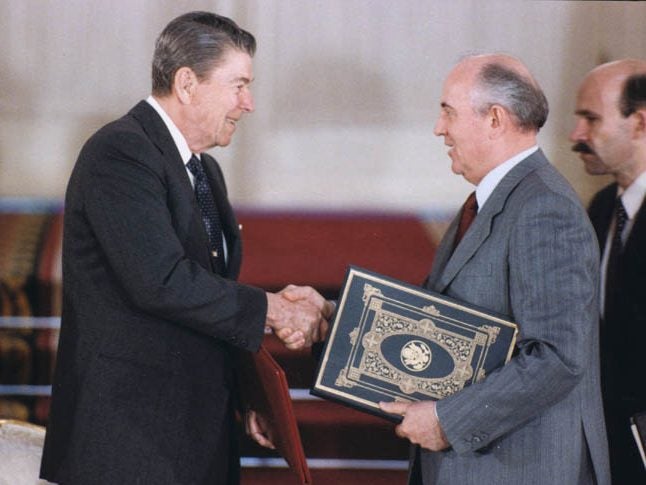
The US and Russia have today withdrawn from the 1987 Intermediate-Range Nuclear Forces (INF) Treaty that capped both countries’ nuclear arsenals.
The landmark deal signed by Ronald Reagan and Mikhail Gorbachev led to a thawing of Cold War relations between the USSR and the US.

Discover B2B Marketing That Performs
Combine business intelligence and editorial excellence to reach engaged professionals across 36 leading media platforms.
The US first declared its intention to withdraw from the treaty in 2018 with President Donald Trump saying: “They’ve [Russia] been violating it for many years”.
The move means that only one treaty, the New Strategic Arms Reduction Treaty (START), now governs the nuclear capabilities the countries are allowed to posses. This deal is due to expire in 2021, and if New START is not renewed there will be no limits on the nuclear capabilities of Russia and the US.
The US blamed Russia for the collapse of the treaty after it said the country had consistently violated its terms by developing and fielding new nuclear weapons systems.
In a statement, US Secretary of State Mike Pompeo said: “Russia is solely responsible for the treaty’s demise. Dating back to at least the mid-2000s, Russia developed, produced, flight-tested, and has now fielded multiple battalions of its noncompliant missile.

US Tariffs are shifting - will you react or anticipate?
Don’t let policy changes catch you off guard. Stay proactive with real-time data and expert analysis.
By GlobalData“The United States first raised its concerns with Russia in 2013. Russia subsequently and systematically rebuffed six years of US efforts seeking Russia’s return to compliance.”
The US has signalled that it is looking to replace the treaty with Pompeo saying: “President Trump has charged this Administration with beginning a new chapter by seeking a new era of arms control that moves beyond the bilateral treaties of the past.
“Going forward, the United States calls upon Russia and China to join us in this opportunity to deliver real security results to our nations and the entire world.”
In a statement on the state-run RIA Novosti news agency, Russia’s Ministry of Foreign Affairs said that the deal was “formally dead”.
NATO Secretary-General Jens Stoltenberg said: “We regret that Russia showed no willingness and took no steps to comply with its international obligations. As a result, the United States’ decision to withdraw from the Treaty is now taking place.
“This decision is supported by all NATO Allies, because no international agreement is effective if it is only respected by one side.”
The treaty has weakened over the years after Russian President Vladimir Putin declared the deal to not be in the country’s interests in 2007. Later in 2014 the Obama administration accused Russia of violating the treaty but did not leave it for fear of sparking a new nuclear arms race.
The US gave Russia notice of its move to suspend the treaty in February giving Russia until today to come into compliance with terms of the agreement.
The treaty banned the fielding of all land-based missiles with a range of between 310 and 3,400 miles. Within four years of the treaty being signed the US and USSR decommissioned over 2,500 missiles. The treaty did not cover sea and air-based systems.
Russia and the US carry the world’s largest nuclear arsenals, with both countries stockpiling over 6,000 warheads each.





